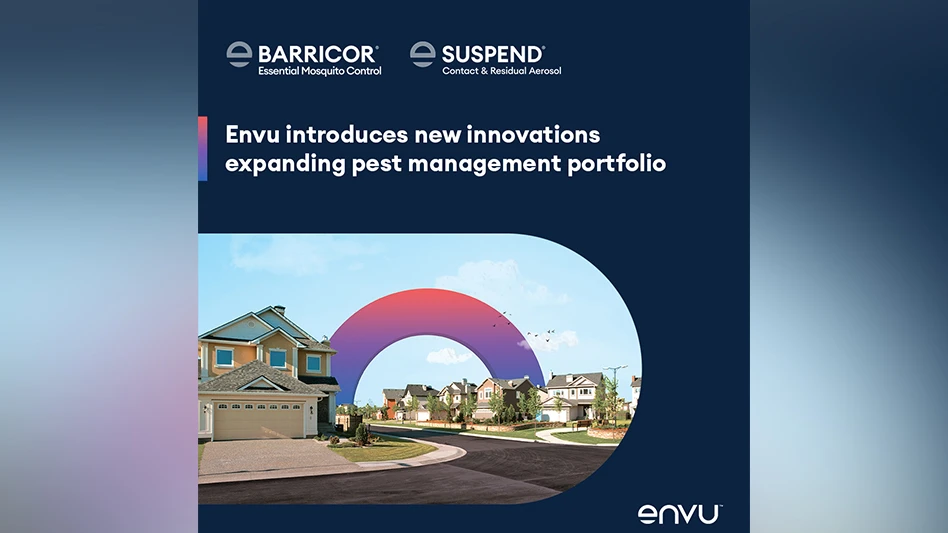 In February 2010, two Salt Lake City children, sisters ages 1 and 4, died following the application of aluminum phosphide pellets around their home. Investigators alleged that the pest management professional hired to exterminate rodents from the family's lawn misused the product, applying too much and placing it too close to the home.
In February 2010, two Salt Lake City children, sisters ages 1 and 4, died following the application of aluminum phosphide pellets around their home. Investigators alleged that the pest management professional hired to exterminate rodents from the family's lawn misused the product, applying too much and placing it too close to the home.
The tragedy resulted in swift action by the U.S. Environmental Protection Agency. After consultations with NPMA and the registrants, both who feared losing the right to use the products for use in any rodent burrows, in April 2010 the agency issued a news release imposing tighter restrictions on the use of aluminum and magnesium phosphide products. Product labeling now specifies more stringent regulations related to the types of buildings around which the product may be applied, the required buffer zone around those buildings, acceptable uses of the product, signage and documentation requirements, and certification requirements.
For pest management professionals who deal with pocket gophers, ground squirrels, moles, voles, prairie dogs, badgers, marmots and other burrowing creatures, these new restrictions in many cases mean identifying alternatives that get the job done as efficiently and cost-effectively as possible. It may also require taking a new look at the pricing of those alternative services.
Viable Alternatives. "You can find a lot of alternatives to aluminum and magnesium phosphide products," says Senske Pest Control General Manager and CFO Gene Chafe. "Unfortunately, since we've only recently begun turning to these alternatives, it's too soon to say which ones are most effective." Senske is headquartered in Kennewick, Wash.
Chafe, a former director of the National Pest Management Association and current director of Washington Friends of Farms and Forests, is called on to manage burrowing pests often, so he has tried a broad range of controls. Chafe talked to NPMA PestWorld 2010 attendees about each:
Baits. Baits are commonly used to control pocket gophers, ground squirrels, moles and voles. The most popular types contain zinc phosphide (ZP), strychnine or warfarin. Formulations include seeds, pellets, blocks and gels.
"In Washington, we deal with a lot of moles, which usually respond to baits," says Chafe. "We typically use ZP ag baits, gel baits and warfarin (primarily Talpirid). In Utah and Idaho, voles are a bigger issue. Voles tunnel. In the spring, you can see their runs all the way through lawns. In the winter, they literally build tunnels between the snow and grass. The snow melts and you can see their runways. We place bait stations into the tunnels or directly onto the runs. Either way, you have to keep applying the bait, because vole populations become huge almost overnight."
Traps. Trapping is a nonchemical alternative to managing pocket gophers, ground squirrels and moles. Chafe's crew has used snap traps, harpoon traps, scissor-jaw traps and choker traps.
"We do some trapping, but it's labor-intensive, requiring multiple visits," Chafe said. "You might also run into issues with state regulations. In Washington, for example, in an effort to appease animal-rights activists, the legislature banned traps that rip the bodies of fur-bearing animals. It never defined 'fur-bearing animals,' but the Department of Fish and Wildlife later determined that a mole was a fur-bearing animal. So you have to stay current on the laws and practices of your state."
Cultural Controls. Habitat modification, subsurface fencing and other cultural controls can play a role in pest management in agricultural areas and other locations where chemicals or trapping could cause detrimental effects. Taking measures such as reducing water and food supplies, clearing brush and debris, destroying vacant tunnels, furrowing around the property and introducing natural predators make an area unappealing to burrowing rodents.
Other Alternatives. Sulfur cartridges, fumigants, propane exploding devices, extraction devices and shooting are other options that might be considered. While Chafe describes some of the products on the market as "wild," he said many of them have a place, depending on the situation.
"Years ago, we treated the Seattle Sea-hawks practice facility at Eastern Washington University, which was crawling with ground squirrels," Chafe recalls. "They didn't want us to use pesticides, but they also didn't want to pay the high fees associated with trapping. So we spent a great amount of time with sulfur cartridges, running around with wheelbarrows, lobbing bombs into holes and covering them. It actually worked, but I suspect we lost money on the job."
Due Diligence. No matter which method of pest control you choose, remember to use discretion. If you aren't careful in your practices, you can cause collateral damage to other creatures, Chafe said. Also, you should be sensitive to the possibility that some people might consider certain methods cruel or inhumane.
For instance, Chafe recounts visiting a crop duster who was loading bins of ZP ag bait that he planned to dust onto apple orchards for the winter to control voles. While the method might have been an effective solution for the intense vole population, it was also likely to endanger a variety of other animals.
Furthermore, Chafe says he has been picketed for pigeon control and has seen plenty of other pest management professionals draw criticism for eliminating ground squirrels and other pests. "Your customers and their communities will appreciate your discretion," he advises. "Baiting or trapping is probably best in residential situations. If you start setting off propane explosions, you're likely to stir up some unwanted attention."
As far as the financial side of this business goes, Chafe says that unless they raise their fees, many pest management professionals will lose money on burrowing pest projects going forward.
"The alternatives to aluminum and magnesium phosphide products tend to be more time consuming and require more effort and materials, and so they will command higher fees," says Chafe. "It will be interesting to see at what level price resistance sets in. We need to find that line where the customer will actually buy while the pest control company actually makes money. I wouldn't be surprised to see some companies backing out of this work because it won't be profitable for them anymore."
The author is a freelance writer in Cleveland, Ohio. She can be reached at ddefranco@giemedia.com.

Explore the September 2011 Issue
Check out more from this issue and find your next story to read.
Latest from Pest Control Technology
- How to Get Rid of Odorous House Ants
- Massey Services Promotes Herndon to Director of Sales for Multi-Family Division
- NPMA Announces First Recipients of NPMA PRO Certified Credential
- Pestmaster of the Hudson Valley Acquires Catskill Animal Damage Control
- Photo Slideshow: Ant Identification Tips
- Video: Top 10 PCT Photo Contest Finalists
- UF/IFAS Study Reveals Boats as Perfect Vessels for Global Termite Spread
- Pest Control Consultants (Iowa) Earns Pinnacle Performance Award







